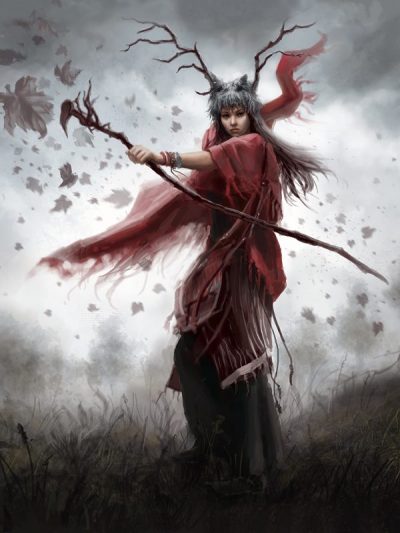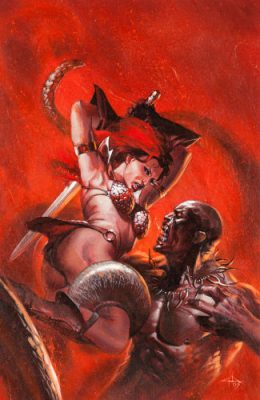While I am usually rather against mechanics that are obviously made for gameplay reasons and not for getting reasonably realistic results, encumbrance is one element where I make a big exception. I am a huge fan of inventory slots in pen and paper games. Not because they are in any way realistic but simply because any attempts to measure items by weight or volume end up as such bothersome bookkeeping that people usually end up ignoring encumbrance entirely.
Which in a game of exploration expeditions and treasure hunting is a real shame. You lose so much of the experience of dungeon crawling and wilderness travel when you don’t have to worry about being slowed down by carrying too many supplies. And even worse, when the PCs can carry as much supplies (which are dirt cheap) as they want, then it also becomes redundant to track how many more torches and rations they currently have with them. And really: What’s left then? A Pathfinder adventure! I mean combat! Bookkeeping is not fun, but having to worry about running out of light or throwing away all your food to be able to outrun a monster while still hanging on to all your gold is something I never would want to miss again. And in AD&D 1st Edition and the Basic/Expert gold is not primarily money. Most importantly gold is experience. Your XP take up inventory space and can slow you down on your way to safety.
It always amazes me how deeply interconnected the various elements. Encumbrance, XP for treasure, and random encounters only look like completely different things but they are all a single unit of resource management that really is at the heart of the oldschool experience. If you drop one, the other two no longer work either and there’s nothing to keep the party from having 15 minutes adventuring days and rest after every fight, which is the huge glaring flaw of 3rd Edition and Pathfinder.
As such,I am really a big fan of the Encumbrance system in Lamentations of the Flame Princess which gives each character a number of inventory slots and every item takes up one slot. It doesn’t adjust the item limits based on character Strength but otherwise it’s clearly the right approach. The typical character sheet has a section for items with one line available for each item. Just mark after how many lines the encumbrance limits are reached and you never need to even count how many items your character carries. As long as you leave no lines empty you just have to check whether your item list passes the marked lines. That’s an encumbrance system you can actually use at the table without annoyance.
But now finally to XP: In my Ancient Lands campaigns there is very little use for money. It’s really only needed for big bribes, tributes, ransoms, or for buying really big things. And most people rarely use coins in daily life. So I don’t even bother with individual coins anymore. Instead I simply go with treasure items. In LotFP,a bag with 100 coins takes up one inventory slot. Like LotFP, I think silver is a much more sensible standard coin for normal business and it makes finding gold much more exciting when it’s not something people see every day. So the standard treasure item is worth 100 XP, with a bag of silver coins being the benchmark for how valuable such items commonly are on average. In addition to that I am also using great treasure items that are worth 1000 XP, or as much as a bag of gold coins. This reduces bookkeeping again by a lot. (I really hate bookkeeping.)
XP for treasure is a great system because it rewards players for behavior that you want to see as the GM. It rewards them not for slaying a monster but for getting the treasure guarded by the monster. It seems a bit silly that characters would get better at fighting by collecting coins, but then it’s no more realistic to learn more spells by shoting people with a crossbow. XP for gold encourages players to explore and sneak. XP for combat encourages combat. It actually discourages sneaking and negotiating except as means to get an advantage for a coming fight. I like XP for treasure much better, but the concept behind the Ancient Lands is not just one of treasure hunters but a game of knowledge seekers. Gold and jewels are not meant to be actually that thrilling for the PCs who are striving for a higher goal. Something else is needed to which the players are encouraged by the lure of XP.
By default characters get no XP for magic items. Magic items are useful to the party and give them advantages while in an oldschool game money usually doesn’t. Unless you eventually get into building castles,there’s not really much to do with all the massive piles of gold characters gain on their progression to higher levels. But in my campaigns the search for and fighting over rare magic items takes center stage and so I want to reward it with XP as well. Since magic items are meant to be rare, the players won’t getting their hands on a lot of them. At the same time gold and silver are meant to be less lustrous so I can simply hand out less of mundane treasure to even out the total gain of XP. The main difference is that magic items are worth much more XP but still take up only one inventory slot. But again,this can be countered by giving more silver treasues (100 XP) and fewer gold treasures (1000 XP).
Now assigning specific values to magic items is difficult as they don’t have a value that could be measured in coins. But in the end the XP are awarded for the challenge of getting them and so I consider it a good solution to simply set the XP for retrieving a magic item to 1000 times the dungeon level on which it was found. By which I don’t mean the actual physical story of the dungeon but the difficulty of the Wandering Monsters table that is used for the dungeon level. Often that will be just three or five times the value of a regular gold treasure,but then the players can also actually use the item’s power to their advantage, making it worth more to them than just the XP. I think it’s also a nice rule of thumb for special treasure items like huge gems.


 OSR games, particularly in the Weird OSR scene that
OSR games, particularly in the Weird OSR scene that